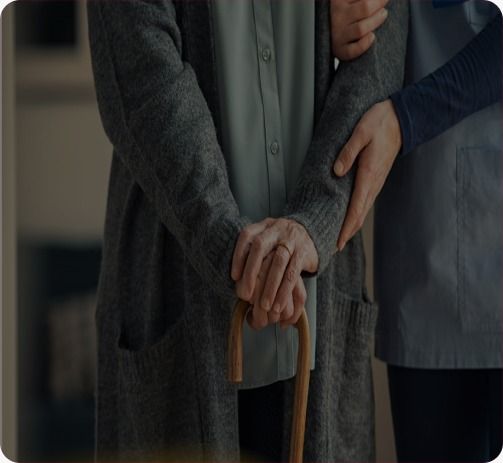As individuals age, it becomes increasingly important to monitor their health and well-being, especially at home, nursing homes and assisted living homes are the places where older adults receive support and care. Parkinson's disease, a progressive neurodegenerative disorder is one condition that requires early detection for effective management.
By recognizing the early signs of Parkinson's disease, nurses and caregivers can take proactive measures to ensure timely intervention and enhance the quality of life for elders. It is crucial to be aware of the five common early signs of Parkinson's disease and address them promptly. By doing so, caregivers can provide necessary support, facilitate access to medical professionals, and implement appropriate interventions to manage the symptoms effectively. Timely recognition and intervention significantly contribute to improving the well-being and overall quality of life for individuals with Parkinson's disease. Let’s take a look at few common early signs of Parkinson’s:
Tremors and Shaking:
One of the hallmark signs of Parkinson's disease is tremors or shaking, typically starting in one hand or limb. Caregivers should pay attention if they notice an elder experiencing tremors, especially at rest or when performing specific tasks. Documenting the frequency, duration, and body parts affected by tremors can provide valuable information for healthcare professionals.
Bradykinesia (Slowed Movements):
Parkinson's often causes a slowing down of movements, known as bradykinesia. Nurses and care attendants should observe if their residents exhibit difficulty initiating movements, such as walking or getting up from a seated position. Stiffness and reduced facial expression may also accompany slowed movements. Monitoring residents' mobility and noting any changes can help in early detection.
Muscle Stiffness and Rigidity:
Parkinson's disease can lead to increased muscle tone, resulting in stiffness and rigidity. Caregivers should be attentive to residents who experience muscle stiffness, particularly in the limbs, neck, or trunk. It may be observed as resistance when attempting to move the affected body parts. Regular range of motion exercises and flexibility assessments can aid in identifying and managing muscle stiffness.
Postural Instability and Balance Issues:
Another early sign of Parkinson's is postural instability and balance problems. Caregivers should observe if residents frequently lose their balance, experience unexplained falls, or have difficulty maintaining an upright posture. Monitoring changes in gait patterns and providing appropriate mobility aids can help prevent accidents and maintain residents' safety.
Changes in Speech and Writing:
Parkinson's disease can affect the vocal cords and muscles involved in speech production. Caregivers should be alert to any noticeable changes in residents' speech patterns, such as softer or slurred speech, hesitations, or a monotone voice. Additionally, individuals with Parkinson's may experience difficulty in writing, with smaller and cramped handwriting. Documenting these changes can aid in early detection.
At Epoch we believe and practice early identification of Parkinson's disease for timely intervention and improved quality of life for residents. By recognizing the early signs, such as tremors, slowed movements, muscle stiffness, balance issues, and changes in speech and writing, caregivers can work closely with healthcare professionals to provide appropriate care and support. Regular monitoring, documentation, and communication among caregivers, residents, and medical staff play a vital role in identifying these signs and facilitating early diagnosis and treatment. By staying vigilant and proactive, we can significantly contribute to the well-being of individuals living with Parkinson's disease.













